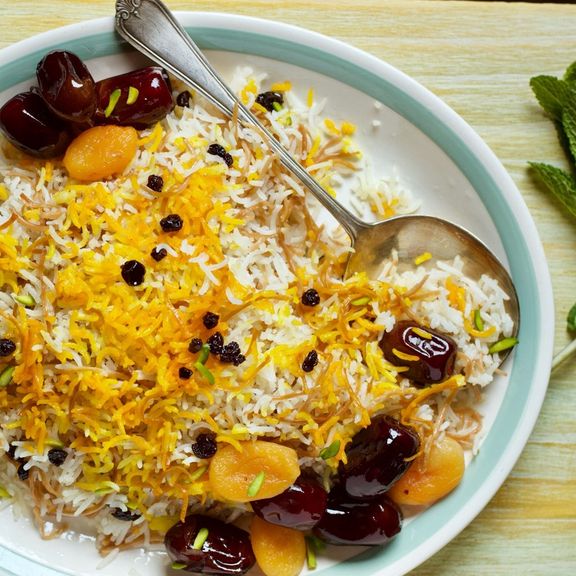Israel Hits Iran-Linked Targets Near Syria's Aleppo Airport

Israel hit targets near Syria's Aleppo airport Wednesday in an air strike reportedly aimed at destroying an Iranian arms depot.

Israel hit targets near Syria's Aleppo airport Wednesday in an air strike reportedly aimed at destroying an Iranian arms depot.
The Syrian defense ministry said the air strike targeted the vicinity of Syria's Aleppo airport causing some "material damage.”
Israel has been carrying out regular attacks since 2017 against what it has described as Iran-linked targets in Syria, where Tehran's influence has grown since it began supporting President Bashar al-Assad in the civil war that started in 2011.
In the third attack on Aleppo airport in six months, Israel launched "a number of missiles from the Mediterranean Sea, west of the coastal city of Latakia, at 3:55 a.m.", the Syrian defense ministry said in a statement on state media.
Two regional intelligence sources told Reuters the strike hit an underground munitions depot linked to the nearby Nairab military airport, where missile-guided systems delivered onboard several Iranian military planes had been stored.
Iran has increased the use of Aleppo airport to deliver more arms over the past month, taking advantage of heavy air traffic as cargo planes offload relief aid in the wake of the February's deadly earthquake, Western intelligence sources say.
An Israeli strike on March 7 that knocked Aleppo airport out of service had blown up an Iranian arms cargo shipment hours after it was delivered by an Iranian plane that Damascus said was carrying aid, the Western intelligence sources say.
Israel has in recent months intensified strikes on Syrian airports and air bases to disrupt Iran's use of aerial supply lines to deliver arms to allies in Syria and Lebanon, including Lebanon's Iran-backed Hezbollah.
The strikes are part of an escalation of what has been a low-intensity conflict termed a "war between wars", the goal of which has been to slow Iran's entrenchment in Syria, Israeli military experts say.
Iran's proxy militias, led by Hezbollah, now hold sway in vast areas in eastern, southern, and northwestern Syria and in several suburbs around the capital.

As the Iranian year was coming to an end on March 20, some local media presented a more than disappointing assessment over the performance of the parliament.
The election for the next parliament (Majles) is less than 11 months from now, and the current parliament, whose members call themselves "revolutionaries" has had no achievement to be proud of.
Khabar Online website in Tehran summarized the "radical parliament's" track record saying that the Majles was "unable to meet the society's demands and incapable of supervising the government's performance” or holding it accountable for shortcomings the media have been complaining about on a daily basis.
According to the website, lawmakers have failed to address issues such as the the economic hardship people face, the fall of the Iranian currency, deadlock in the country's foreign policy, international isolation, inefficiency of local governors and other officials including cabinet ministers. They have not been able to impeach any minister although they talked about it every single day.
The Majles has not been able even to make the government accountable for the promises given to the people. Nor the Majles asked any serious questions about why the government has not been able to control inflation.
Prices of cars, houses and rents have been constantly on the rise, turning necessities into dreams for citizens. Journalists in Iran tweeted that in some areas people buy their daily bread on credit from neighborhood bakeries, promising to pay at the end of the month.
When at one point in February the US dollar rose to 600,000 rials, Vice President Mohammad Mokhber told the Majles that he cannot do anything about it and lawmakers "can take it or leave it." Parliament simply listened to Mokhber and took no action.

During the year, most proposed bills ended in controversy and remained inconclusive. Here are some examples:
Hijab
While opposition to compulsory hijab was the one of the root causes of the uprising that shook the country for more than five months, the Majles discussed a bill that called for sending text message threats to women and freezing their ID cards and closing their bank accounts as well as forcing them to pay a fine for not wearing their headscarves "properly". They seemed not to care that this was exactly why Mahsa Amini was murdered in police custody.
Women
Another controversial bill proposed to restrict women's freedom to travel abroad, demanding that all women should have the consent of their husband, father or grandfather for a travel permit. Apart from everything else, those who drafted the bill failed to realize who would sign the permit for an 80-year-old woman who has no husband or father. After several denials by lawmakers, no one still knows if the bill has gone any further.
Documenting Crimes and Brutality
As photos and videos of police brutality during the protests went viral on social media, the parliament approved that filming such scenes is strictly prohibited. The bill even called for harsh punishment for anyone who circulated such images on social media or sent them to foreign-based media. Those breaking the law could be charged with colluding with the enemy and acting against national security, the bill stipulated.
"Fake" News
Another controversial bill called for prosecution of anyone who posted any "false" story on social media. The bill said that courts, which are in fact controlled by intelligence agencies, are the authority to determine if a news story was fake. Basically, the bill meant that any account of events different from the official version is punishable.
Other similar bills included barring university students from travelling abroad as a punishment for taking part in protests, as well as controversial attestations that forced government employees to learn to recite the Koran.
While these bills backed by hardliners may not have majority support, supporters can get them passed at the opportune moment. Meanwhile, the parliament has not tackled any legislation to alleviate the financial hardships endured by citizens.

As calls continue to close the British Islamic Center in London, linked to Iran's regime, Security Minister Tom Tugendhat described it as a "vile threat" against the country.
Tugendhat told The Times that the government was “pulling together” to deal with “this vile threat that’s taken over a country and is now threatening ours.”
The British minister had previously warned that the "interference, threat and influence" of the Islamic Republic of Iran on British soil has increased alarmingly.
During a parliamentary debate on Monday, several UK lawmakers called for the Islamic Republic’s outpost to be closed.
Tugendhat stated that lawmakers are “absolutely right” to be worried about such “cultural centers” in Britain.
“Sadly, the Islamic Centre for England is not alone and the work of the IRGC is not limited to those Iranian proxy organizations.”
The center is run by Iranian ruler Ali Khamenei’s representative Seyed Mousavi. The UK Charity Commission has launched an investigation over its governance, the content of its website and the events it organizes.
Previously, a group of Iranians had prepared an online petition for the closure of the Islamic Center of England, which was signed by tens of thousands of people.
In recent months, Iranians have demonstrated many times in London demanding the closure of the center.
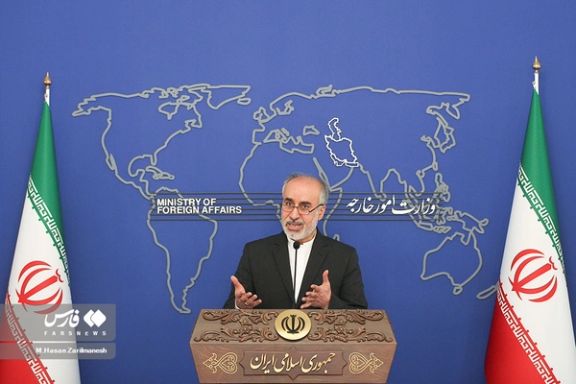
Iran’s foreign ministry spokesman says the message by US President Joe Biden on the occasion of Iranian New Year, Nowruz, supporting Iranian women’s demand for freedom, is a “lie”.
In a tweet on Tuesday, Nasser Kanaani said, “the false claim of supporting Iranian women while Washington intensifies the cruel sanctions against the Iranian nation is a display of the hypocrisy and hostility of the American regime and its anti-Iranian leaders."
US President Joe Biden in a statement on Monday congratulated Iranians on the arrival of Nowruz saying this year, the New Year comes at a difficult time for many families, when hope is needed more than ever—including for the women of Iran who are fighting for their human rights and fundamental freedoms.
“The United States will continue to stand with them, and all the citizens of Iran who are inspiring the world with their conviction and courage. And together with our partners, we will continue to hold Iranian officials accountable for their attacks against their people.”
However, Kanaani claimed in his tweet that “Enmity with the Islamic Republic of Iran and the Iranian nation is a constant part of the foreign policy of the American regime.”
This is Biden's third Nowruz message since he entered the White House. The President and the First Lady also took pictures next to the Haftseen table which is an ancient Persian tradition representing seven symbols to celebrate the beginning of the Iranian new year.
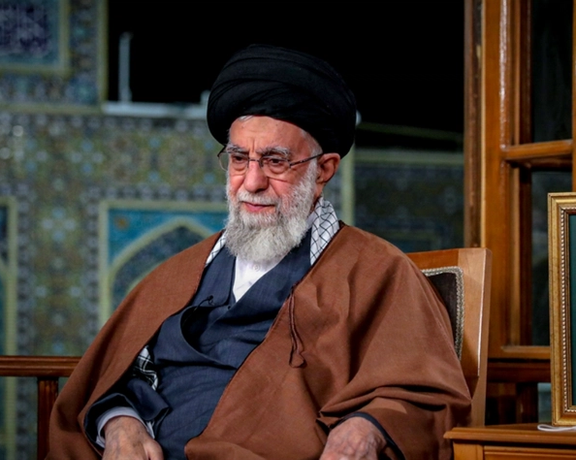
In his Nowruz New Year message to the nation Monday, Iran’s Supreme Leader Ali Khamenei did not mention foreign relations and focused on economic difficulties.
He acknowledged that there are “political problems” but did not directly mention six months of antigovernment protests, arguing that the economic problems the country faces are the main reason for all other problems.
Despite putting emphasis on the economic crisis, mainly because of its confrontational foreign policy, he did not mention the stalled nuclear negotiations with the West, nor the agreement reached earlier this month to restore ties with regional rival Saudi Arabia – a point that he could have mentioned as a positive accomplishment amid a grim reality in the country.
A positive reference to the deal with Riyadh would have gone a long way to reinforce statements by other officials that Iran is bent on improving relations with regional Arab countries and perhaps ending the war in Yemen, where Tehran has rendered military support to Houthis fighting a Saudi coalition.
Khamenei has been a steadfast opponent of the Saudi government and has labelled the country a lackey of the United States, an epitome of “corruption”, meaning un-Islamic and an enemy of Muslim unity. His followers have equated Saudi Arabia with “Zionists”, the worst possible insult in the regime’s lexicon.
Having decided to restore diplomatic relations with Riyadh, Khamenei is perhaps finding it hard to walk back his long-held views. The decision to restore relations was made amid international isolation, economic crisis and the threat of an Israeli attack on its nuclear installations.
However, it was clear that that the decision was his, since he sent his trusted man in the national security council, Ali Shamkhani, to Beijing to sign the agreement on March 10.
Speaking about multiple difficulties Iran faces, Khamenei tried to indirectly imply that the population has no political demands and all problems stem from a weak economy. “The most important problem for the Iranian nation [in the past year] was the problem of the country’s economy, which impacts people’s livelihood,” he said.
However, months of nationwide protests showed that a significant part of the population, especially the youth, reject the Islamic Republic regime altogether and want a secular, democratic political system.
Although he acknowledged the seriousness of economic problems, he did not mention sanctions imposed by the United States, which he and his subordinates have often cited as the reason for a 50-percent annual inflation rate, high unemployment and increasing poverty. It seemed that Khamenei simply decided not to speak about any foreign policy issue.
Having chosen to focus on economic problems, Khamenei tried to “put it in perspective” as he put it.
“Economic difficulties are not unique to us…all countries have some sort of peculiar economic problem, even rich countries,” he said, and went a step further claiming that some “are in much worse situation than we are.”
Iran’s national currency, the rial, has fallen by more than 50 percent since September, pushing food prices higher between 70-100 percent, on top of similar price hikes in the past five years since the imposition of US sanctions. Tens of millions of working and even middle class people have fallen into poverty, not able to afford basic necessities.
The 83-year-old authoritarian ruler proclaimed the new year as the year to fix the economy, increase production and control inflation, slogans often repeated in the past decade.
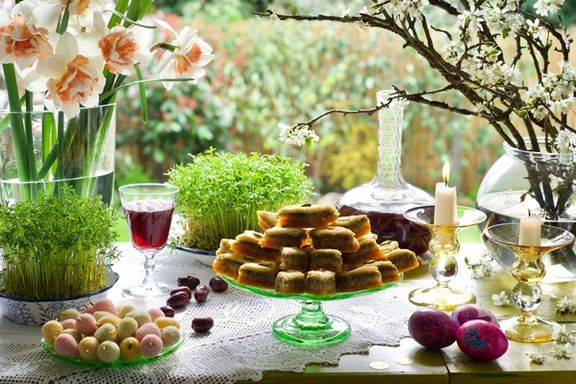
Iranians, and millions in other countries, celebrate the ancient Nowruz, or New Year on March 21, and begin the year 1402 in the Persian calendar.
Exactly at 54 minutes, 28 seconds past midnight Tehran time on March 21, the ancient Nowruz festivities began with family members assembled around a spread called ‘haftseen’ exchanging holiday greetings and gifts.
The spread, on the floor or on a table, is laden with flowers and sprouted greens, which celebrate the coming of spring, symbols of wealth (coins), fertility (painted eggs), life (goldfish), apples, a mirror, candles, sweets, nuts, a pudding made with wheat germ, and a holy book such as the Quran or a tome of the nationally revered poetry of Hafiz Shirazi.
The names of at least seven of the many items on the spread must begin with the Persian letter ‘sin’, probably the short form of sini (tray) as the custom was to display such items on seven trays.
Nowruz celebrations form an integral part of the Iranian identity. Despite Iran's Islamification fourteen centuries ago, and the Islamic Revolution of 1979, the celebration of Nowruz has endured not only in Iran but also in many of its neighboring countries such as Afghanistan, Turkmenistan, Azerbaijan, and among Kurds in Turkey and Iraq.
History and Origins
Nowruz has been celebrated by Iranians since Achaemenid times (550-330 BC). The word Nowruz, which derives from Old Persian nava sarda (new year) is only attested in Middle Persian. The feast itself has its roots in ancient agricultural festivals which centered around the cycle of nature. Some scholars believe ancient Persians were inspired by the splendor of Babylonian spring festival of Akitu developed their own Nowruz festival.
Some historians also believe that the magnificent Persepolis complex in southern Iran built by Achaemenid kings, or at least parts of the complex such as the Apadana Palace, and the Hundred Columns Hall, were specifically built for celebrating the New Year.
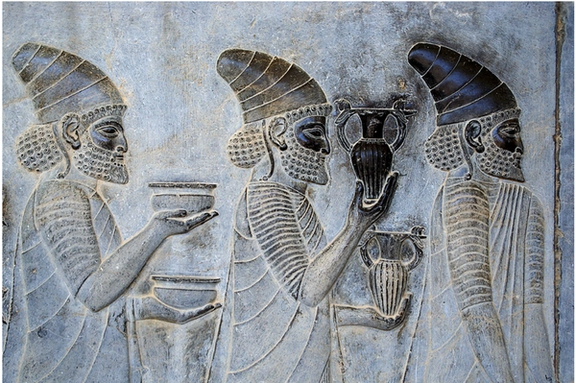
The bas-relief at the Apadana Palace which shows representatives of the nations under the Achaemenid Empire bearing gifts for the King of Kings may be a portrayal of the Nowruz celebration at the heart of the empire.
The Islamic Republic rulers have never embraced the pre-Islamic Nowruz, but they have also not dared to ban it.
Nowruz, Celebration of Spring Equinox
The exact moment of the beginning of the new year, which varies from year to year and was calculated by astronomers since ancient times, marks the Spring Equinox in the northern hemisphere. Accordingly, the turn of the year may fall anytime from the evening of March 20 to the evening of the next day.
Unlike the lunar calendar prevalent in other Muslim countries in which it is the year 1444 now, the new year will be 1402 in the solar Jalali calendar, Iran's unique calendar introduced in 1079 AD.
Like many things in the Iranian history, the calendar seamlessly combines Islamic and ancient Iranian elements. The first year of the calendar is Prophet Muhammad’s hijra from Mecca to Medina but each of its twelve months is dedicated to an ancient Iranian deity.
The Foods Of Nowruz
On the eve, or the day of Nowruz, Iranians make special foods with seasonal and symbolic significance. In the 20th century, rice mixed with lots of green herbs (dill, coriander, fenugreek greens, wet garlic) and served with pan-fried ‘mahi sefid’ fish (Caspian kutum) or other fishes has become highly representative of the food for Nowruz.
Other green food, to celebrate the end of winter and arrival of spring, such as a very green, thick omelet made with the same type of herbs (kuku sabzi) and served with green or plain rice are also very popular.
Apadana, one of the oldest halls of the complex dating to the first half of the 6th century BC, was where the king would hold audience with his subjects, with great pomp on special occasions such as the New Year.

Many families, particularly in central areas where fish was very hard to come by before modern times, make a dish of rice mixed with noodles and served with chicken, dried apricots, and dates instead of the green rice and fish. A stew-like soup with green herbs, legumes and noodles (ash-e reshteh) is also among holiday season foods. Noodles in these dishes symbolize longevity.
During the holiday season, which culminates in the all-important ‘sizdeh be dar’ picnic on the 13th of the first month, Farvardin, people visit family, relatives and friends. Guests are welcomed with sweets, nuts and fruits.
